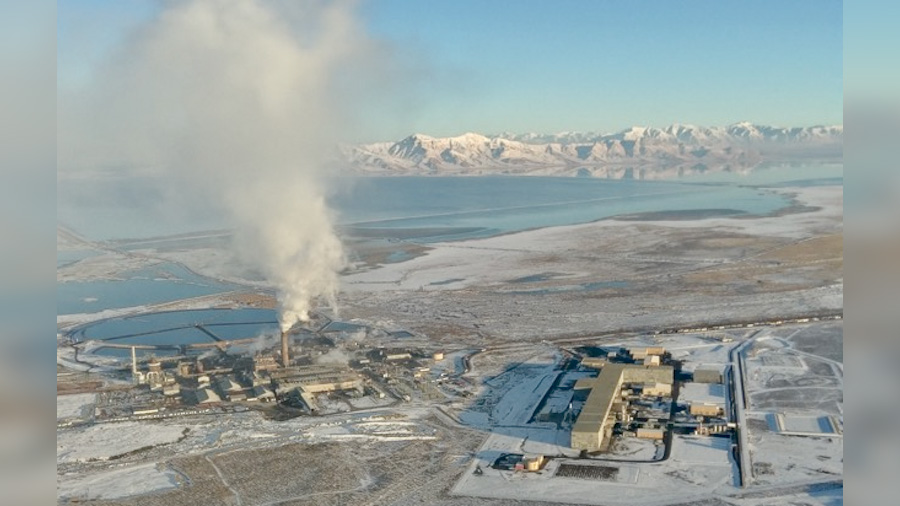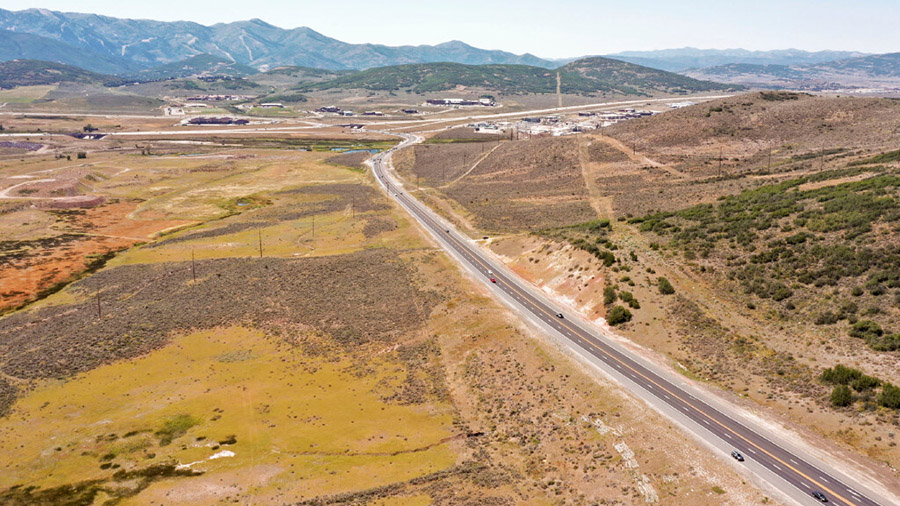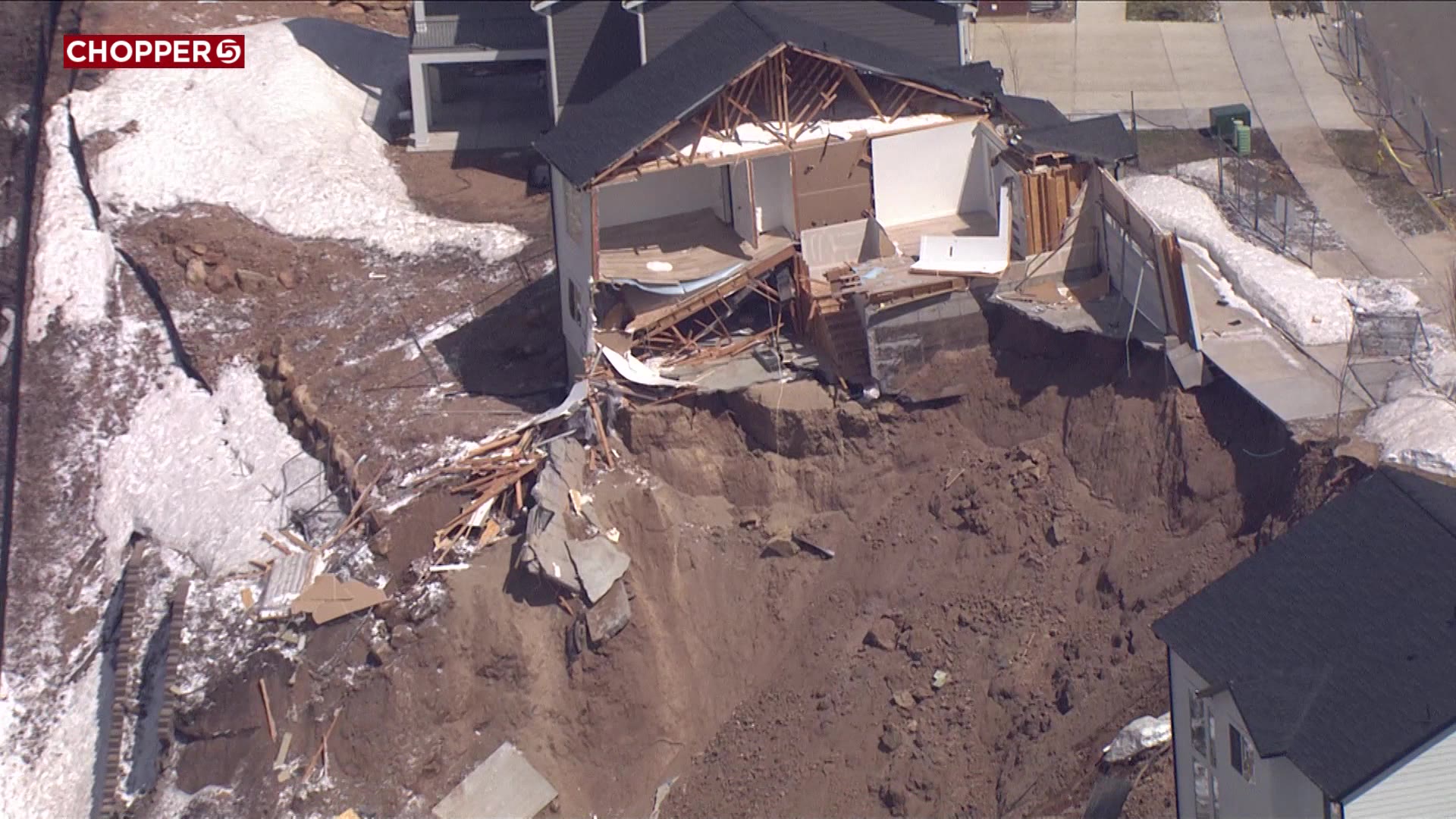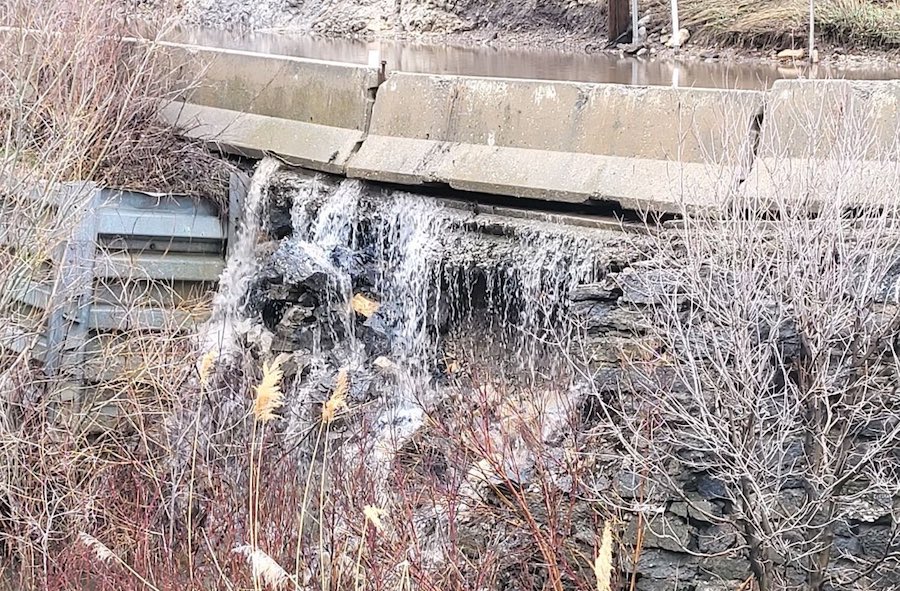LOCAL NEWS
What’s behind northern Utah’s ‘brown clouds’? New study pinpoints a major source
Jan 27, 2023, 9:46 AM | Updated: 9:52 am

A photo of the U.S. Magnesium refinery in Tooele County on Jan. 27, 2017. The plumes from the plant had higher levels of chlorine and bromine, which boosted PM 2.5 levels in the area, according to a new study led by the National Oceanic and Atmospheric Administration. (National Oceanic and Atmospheric Administration)
(National Oceanic and Atmospheric Administration)
SALT LAKE CITY — A magnesium plant located near the Great Salt Lake is a major producer of chemical elements behind the “dense winter brown clouds” that sometimes hang over Salt Lake City and other parts of Utah’s northern half in the winter, a new federal study determines.
The study, led by the Cooperative Institute for Research in Environmental Sciences, finds that the US Magnesium plant in Tooele County produced high levels of chlorine and bromine during a study in 2017. Researchers say the chemicals were “significant contributors” to the clouds forming and boosting particulate matter levels by 10-25% in the Wasatch Front area during a winter inversion period.
“(The plant) is known to be a high emitter of chlorine issues but what was really interesting about this study was that we found a lot of bromine species,” Carrie Womack, a National Oceanic and Atmospheric Administration scientist, the study’s lead author, said in an interview with KSL NewsRadio on Thursday.
“The reason that’s interesting is that the (Environmental Protection Agency) requires facilities to report their chlorine emissions but they don’t require them to report their bromine emissions,” she added. “Bromine is playing a huge role in this build-up of PM 2.5.”
Womack also said that her team also found a “complete disappearance of all of the ozone” in the area, which is something that typically occurs in the Earth’s polar regions and had not been seen before “this far south.”
Her team’s findings were published in the Environmental Science and Technology on Wednesday.
Understanding the pollution within winter inversions
The study itself offers an analysis of plume samples collected via NOAA research flights in January and February 2017. Womack led a team of researchers in a study of winter air pollution in the Salt Lake, Utah and Cache valleys and other areas in between, including the Great Salt Lake.
Researchers wanted to study the area because a few Intermountain West valleys experience particulate matter levels that exceed federal standards more often than other areas of the country. For instance, the Salt Lake Valley averages 18 days of poor air quality days every year, especially during the winter inversion period.
“Our goal was to try and understand how those emissions turn into particulate matter,” Womack said.
High particulate matter levels can have lung and heart health consequences. A 2012 study led by the University of North Carolina Gillings School of Global Public Health found that there was a spike in asthma-related emergency room visits in the Salt Lake Valley during winter inversions, based on data collected from 2003 to 2007.
Womack and researchers at the University of Utah, the University of Toronto, the University of Washington and the EPA began sifting through the data and found many familiar particulate matter origins: pollution from industrial, agricultural and traffic sources. All of these are major factors in pollution production that have been warned about for years.
A previously unknown player
However, the US Magnesium plant also stuck out in the data, Womack said. Researchers had passed the plant as they flew across the Great Salt Lake on their first flight because it was already a “known source of pollutants in the area,” she said, adding that the air even smelled like bleach in the area.
The high bromine levels surprised them, though, as they had never been reported. While state and federal government agency track chlorine and nitrogen oxide emissions, they do not track bromine, an element naturally found in the earth’s crust and in seawater that can cause health problems if transmitted in high-enough doses.
The team’s modeling indicated that chlorine and bromine levels, which were high near the plant, were significantly boosting the region’s particular matter counts. Womack explained it is because the two chemicals are “very effective” at turning other pollutants into particulate matter, which residents see in the form of “brown clouds” during an inversion.

A diagram depicting the change in surface PM 2.5 levels because of halogen emissions, including chlorine and bromine, based on flights over the region in the winter of 2017. (Photo: Caroline Womack, National Oceanic and Atmospheric Administration)
“It was surprising to us how much this one facility was contributing to the PM 2.5 but there are a lot of other sources in the area,” Womack said, adding that the plant may be the largest chlorine emitter in the United States, but it’s unclear how it ranks in bromine because that chemical is not federally tracked.
Researchers also found a lack of ozone near the plant, as a result of the halogenated compounds. This is due to sunlight activating the halogenated compounds “into becoming these very reactive chemical species,” Womack said.
Updating pollution tracking?
It’s unclear what the finding means for health. The researchers say that could be something to study more in the future. They also believe more studies could be done to further understand what role bromine or the magnesium plant has on the region’s air quality.
Meanwhile, a Utah Department of Environmental Quality spokesman wrote in an email to KSL.com that the study could help the Utah Division of Air Quality improve its quality monitoring practices in the future.
“Halogen emissions, such as chlorine and bromine, could impact summertime ozone and wintertime PM2.5 pollution along the northern Wasatch Front. Being able to accurately estimate chlorine and bromine emissions in northern Utah could help (the division) refine their regulatory air quality modeling and better inform policy decisions,” the agency wrote.
US Magnesium LLC did not return KSL’s call for comment by press time. It is the largest producer of magnesium in North America. Magnesium is often used in all sorts of products like car seats, laptops, power tools and even fireworks, according to the Royal Society of Chemistry.
The company also made headlines last month after the Utah Division of Water Quality denied US Magnesium’s request for a canal continuation project by the Great Salt Lake, citing “insufficient information” provided by the company.

![[File] Utah Highway Patrol State Trooper car (Laura Seitz, Deseret News)...](https://staging.ksltv.com/wp-content/uploads/2022/12/UHP-State-Trooper-Car-file-121222.jpg)










